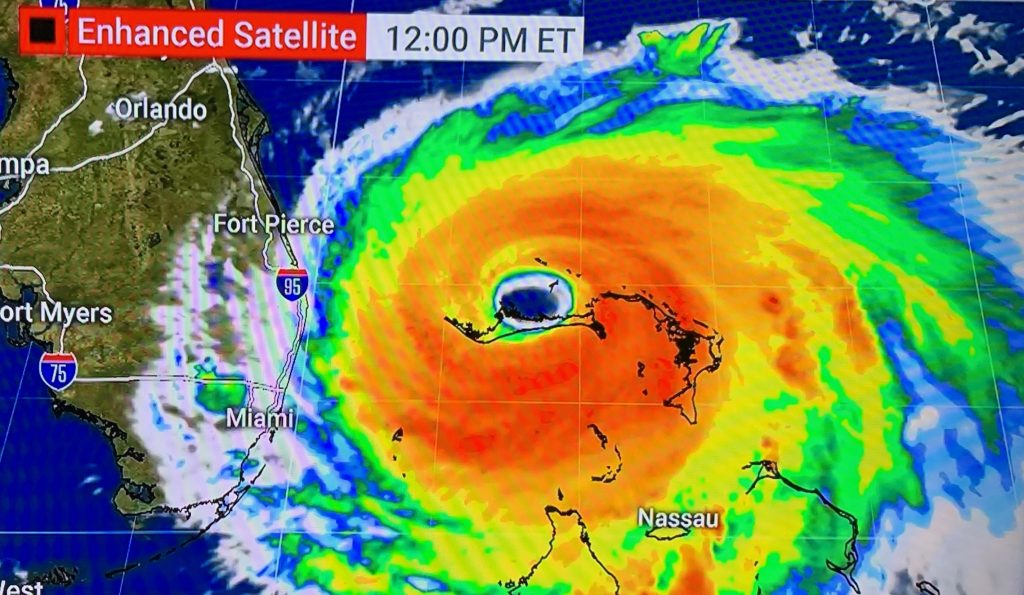Dorian’s Deadly Flooding: Waves, Storm Surge, King Tides

Dorian, the category 5 hurricane with wind speeds over 180 miles an hour (300 km/h) devastated the Northern Bahamas as a major disaster area, with five already reported dead. Damages could be in the hundreds of millions. The whole world watched and listened to reports Monday –– I felt a particular connection, having lived on Grand Bahama for more than twenty five years. I know basically every community that was hit.
Now living in Southeast Florida we also were worried that it would hit us here. Abaco and Grand Bahama were terribly unlucky with this particular extreme cyclone. It remains to be seen how much damage it does further north in Florida, and on up to Georgia and the Carolinas.
With a storm this ferocious, its pointless to say whether the wind or the water is more destructive. The topic I want to address today is how storms, extreme tides, and sea level rise all combine to increase flooding.
Grand Bahama Island was projected to get a storm surge up to 23 feet. Storm surge results from many factors including the shape of the island, the banks – the shallow areas that allow the water to “pile higher” depending on the direction the storm is moving. Storm surge can pile even higher in inland canals and waterways.
Dorian essentially stalled on Grand Bahama, with a forward speed for more than a day of approximately one mile an hour. That intensifies the damage. Also with it lasting a full twleve hour tide cycle, the worst flooding was at high tide adding the few feet of the tide cycle. In addition we are entering one of the times of the year when “king tides” occur, following an alignment of the planets that increases the gravitational pull and makes the high tide extra high, typically adding up to four or five inches.
Each of those factors adds to maximum flood height. It may sound like another foot is not significant when the water height is twenty feet above normal. But that’s misleading. With water level and flooding every inch (few cm) can make the critical difference. It’s the “last inch” that determines whether the water floods over a seawall or levee, in your front door, or knocks out the electrical equipment. This not only applies to your home, at stores, the local power plant, or the lowest points in the distribution system. Also the water supply, waste water treatment facilities, hospitals, food supplies, port and airport.
Sea level has risen about a foot in the last century, but the rate is now accelerating significantly. It was not a major component with Dorian, but that will change in the coming decades. By mid-century, if sea level is even one foot higher, that too will add to the water level for a future hurricane or other flood event.
The lesson is that all coastal communities need to plan better to be more resilient to a range of flood events and to higher base sea level, which raises all the water levels.
With Georgia and the Carolinas now in its path we will all be watching to see how the forces of destruction combine there.
